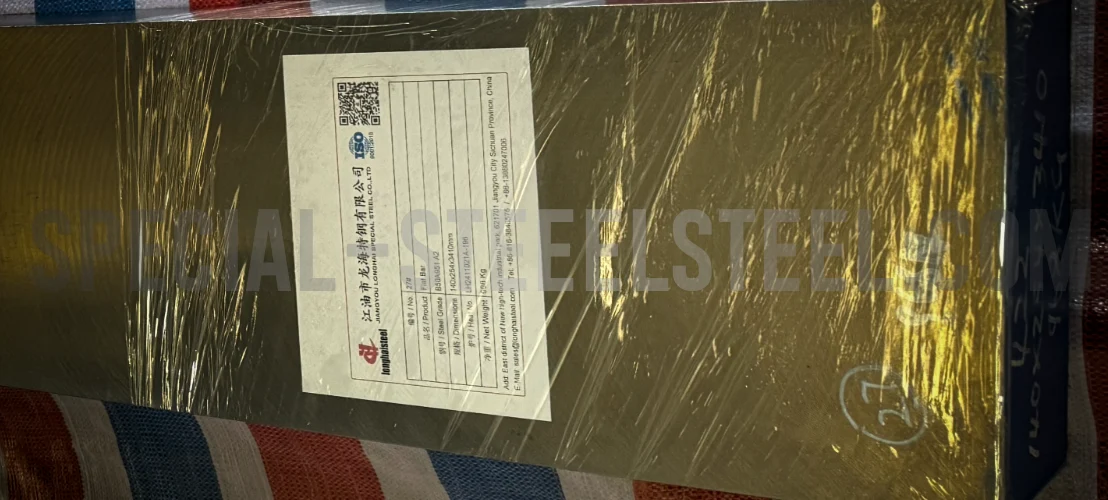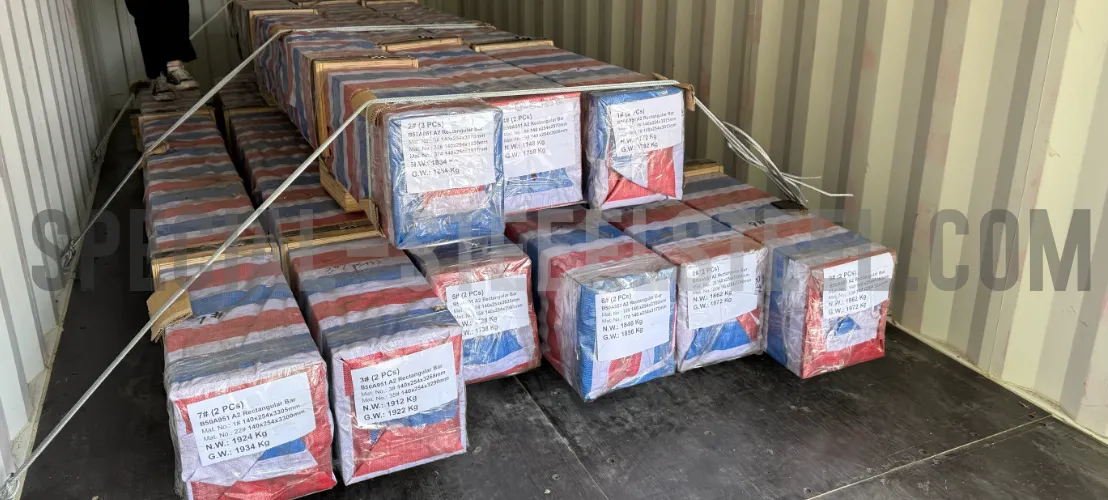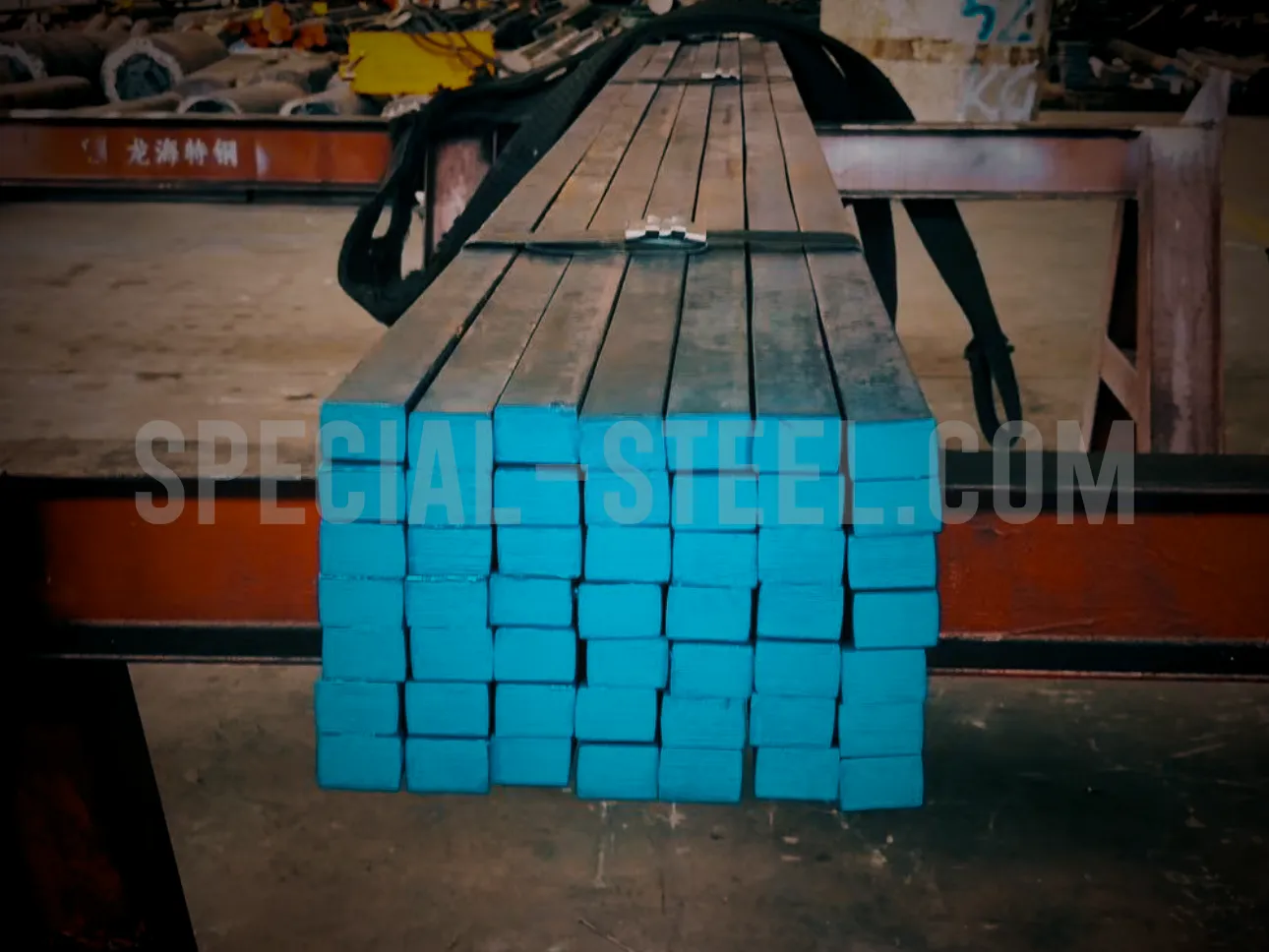AISI 422, SUH 616, B50A951, 1.4935, X20CrMoWV12-1
AISI 422, also known as Alloy 616, 1.4935, and X20CrMoWV12-1, represents a class of high-alloy, creep-resistant martensitic stainless steels engineered for demanding high-temperature applications. These steels, characterized by a 12% chromium content, offer superior corrosion resistance compared to standard steels, making them ideal for critical thermal engine components in power generation facilities




Table of Contents
What is AISI 422, SUH 616, B50A951, 1.4935, X20CrMoWV12-1?
AISI 422, also known as Alloy 616, 1.4935, and X20CrMoWV12-1, represents a class of high-alloy, creep-resistant martensitic stainless steels engineered for demanding high-temperature applications. These steels, characterized by a 12% chromium content, offer superior corrosion resistance compared to standard steels, making them ideal for critical thermal engine components in power generation facilities.
These materials are specified under a range of international standards, including B50A951 (A1, A2), SIEMENS 10705 (BL/M, BR, BU), ASME SA-437 Grade B4B, ASTM A437 Grade B4B, ASTM A565 Grade 616, JIS G4311 SUH 616, and SAE J 775 SUH 616. Specifically, ASME SA-437 and ASTM A437 Grade B4B designate alloy steel turbine-type bolting materials that have undergone specialized heat treatment for high-temperature service. ASTM A565 Grade 616 focuses on martensitic stainless steel bars for high-temperature applications. JIS G4311 SUH 616 and SAE J 775 SUH 616 pertain to heat-resisting steel bars, wire rods, and engine poppet valve information, respectively, highlighting the versatility of these alloys across diverse engineering needs.
| Manufacturer | OEM Part Numbers |
|---|---|
| Franco Tosi | 1.12.KA.801.58.KA.80 |
| Siemens | 10705BL/M10705BR10705BU |
| GE | B50A951A1, A2 |
| Nuovo Pignone | ITN 02123/AITN 07760ITN 07763.09 |
| Ansaldo | TSM0706 |
Applications
Primarily utilized in the fabrication of turbine blades, steam turbine buckets, high-temperature bolting fasteners, valves, and various other miscellaneous components, these alloys are designed to withstand continuous operating temperatures up to 580°C. Their chrome-nickel matrix, featuring an austenitic structure with dispersed carbides, is further enhanced by alloying additions of molybdenum, vanadium, and tungsten. These elements elevate the melting temperature, significantly improving creep resistance and ensuring structural integrity under prolonged thermal stress.
Chemical Composition (%)
| Grade | Chemical composition WT % | ||||||||||||||
|---|---|---|---|---|---|---|---|---|---|---|---|---|---|---|---|
| C | Si | Mn | P | S | Cr | Mo | Ni | V | W | Cu | Sn | Al | Co | Ti | |
Ge Power B50A951 A1 |
0.20-0.25 | 0.20-0.50 | 0.50-1.00 | Max 0.025 | Max 0.015 | 11.00-12.50 | 0.90-1.25 | 0.50-1.00 | 0.20-0.30 | 0.90-1.25 | Max 0.15 | Max 0.02 | Max 0.025 | 0.20 | 0.025 |
Ge Power B50A951 A2 |
0.20-0.25 | 0.20-0.50 | 0.50-1.00 | Max 0.020 | Max 0.010 | 11.00-12.50 | 0.90-1.25 | 0.50-1.00 | 0.20-0.30 | 0.90-1.25 | Max 0.15 | Max 0.02 | Max 0.025 | 0.20 | - |
Ge Power B50A249 S12 |
0.20-0.25 | 0.20-0.50 | 0.50-0.90 | 0.025 | 0.025 | 11-12.50 | 0.9-1.25 | 0.5-1.0 | 0.2-0.3 |
0.9-1.25 |
- |
0.02 |
0.025 | 0.20 | 0.05 |
ASME B4B, ASTM Grade B4B |
0.20-0.25 | 0.20-0.50 | 0.50-1.00 | Max 0.025 | Max 0.025 | 11.00-12.50 | 0.90-1.25 | 0.50-1.00 | 0.20-0.30 | 0.90-1.25 | - | Max 0.04 | Max 0.05 | Max 0.050 | |
ASTM A565 616 |
0.20-0.25 | Max 0.50 | 0.50-1.00 | Max 0.025 | Max 0.025 | 11.00-12.50 | 0.90-1.25 | 0.50-1.00 | 0.20-0.30 | 0.90-1.25 | - | - | - | - | - |
EN 1.4935, X20CrMoWV12-1 |
0.17-0.24 | 0.10-0.50 | 0.30-0.80 | Max 0.025 | Max 0.015 | 11.0-12.5 | 0.80-1.20 | 0.3-0.8 | 0.25-0.35 | 0.4-0.6 | - | ||||
JIS SUH 616 |
0.20-0.25 | Max 0.50 | 0.50-1.00 | Max 0.040 | Max 0.03 | 11.0-13.0 | 0.75-1.25 | 0.5-1.0 | 0.2-0.3 | 0.75-1.25 | Max 0.3 | ||||
AISI 422, S42200 |
0.20-0.25 | Max 0.75 | Max 1.00 | Max 0.040 | Max 0.03 | 11.0-12.5 | 0.75-1.25 | 0.5-1.0 | 0.15-0.30 | 0.75-1.25 | Max 0.5 | ||||
Material Properties
Type 422 Mechanical properties acc. to GE B50A951
- Tensile strength KSI(MPa): Min 140(965)
- Yield Strength 0.02%, Offset KSI(MPa): Min 90(620) *
- Elong. In 2": Min 13 %
- RA: Min 35%
- Brinell Hardness, 3000Kg laod: 285-331
- Kv, Min at R.T. ft-lb(J): 10(13.36)
- Tensile strength KSI(MPa): Min 110(759)
- Yield Strength 0.02%, Offset KSI(MPa): Min 80(555) *
- Elong. In 2": Min 18 %
- RA: Min 50%
- Brinell Hardness, 3000Kg laod: 223-269
- Kv, Min at R.T. ft-lb(J): 25(33.90)
Type 422 Class A1, A2, A4
Type 422 Class A3
Tensile Requirements (B50A249B Only)
- Tensile Strength, psi, min. 140,000
- Yield Strength, psi, 0.02%, min. 90,000
- Elongation, % in 2 inches, min. 12
- Reduction of Area, %, min. 25
- Charpy V-Notch Impact Energy Requirements (B50A249B Only)
- Hardness Requirements
Two Charpy V-Notch Impact energy tests shall be conducted at room temperature (70F +/-10F) and have following properties:
Standard Charpy V-Notch Impact, ft-lb, min. 10
Two Brinell Hardness measurements shall be taken at the 0-degree and 180 Degree locations on one end and at the 90-degree and 270-degree locations on the opposite end of each forging. The measurements shall be taken at each end, on either the end face or a radial face in close proximity to the end. All measurements must meet the following requirements:
Brinell Hardness Number, 3000 kg load 290-332
Stress Rupture Requirements (B50A249B Only)
Smooth bar stress rupture tests shall be conducted on each forging or each heat treated forging length. The test may be discontinued after the minimum requirement for time to rupture has been exceeded. The test must meet the following requirements:
- Temperature (Degree F): 1200
- Stress (psi): 26,000
- Min. Time to Rupture (hrs.): 25
1.4935 Mechanical properties acc. to EN 10302
- +QT700
- Tensile strength KSI(MPa): 700 to 850
- Yield Strength 0.02%, Offset KSI(MPa): Min 500
- A5 15%
- +QT800
- Tensile strength KSI(MPa): 800 to 950
- Yield Strength 0.02%, Offset KSI(MPa): Min 600
- A5 14%
Grade B4B Stress Rupture
- Test Method: ASTM E139
- Temperature: 650 °C
- Load:200 MPa
- Result: Life = 25 hours,Elongation and Reduction of Area = For information On bar having lowest hardness for each heat lot.
1.4935 QT700 Creep
| temperature,(℃) | Time,(h) | 1% Rp1(MPa) | 0.5% Rp0.5(MPa) | 0.2% Rp0.2(MPa) | 0.1% Rp0.1(MPa) | CRS(MPa) |
|---|---|---|---|---|---|---|
| 470 | 10000.0h | 324.0 | - | - | - | 368.0 |
| 470 | 100000.0h | 260.0 | - | - | - | 309.0 |
| 470 | 200000.0h | - | - | - | - | 285.0 |
| 480 | 10000.0h | 299.0 | - | - | - | 345.0 |
| 480 | 100000.0h | 236.0 | - | - | - | 284.0 |
| 480 | 200000.0h | - | - | - | - | 262.0 |
| 490 | 10000.0h | 269.0 | - | - | - | 319.0 |
| 490 | 100000.0h | 213.0 | - | - | - | 260.0 |
| 490 | 200000.0h | - | - | - | - | 237.0 |
| 500 | 10000.0h | 247.0 | - | - | - | 294.0 |
| 500 | 100000.0h | 190.0 | - | - | - | 235.0 |
| 500 | 200000.0h | - | - | - | - | 215.0 |
| 510 | 10000.0h | 227.0 | - | - | - | 274.0 |
| 510 | 100000.0h | 169.0 | - | - | - | 211.0 |
| 510 | 200000.0h | - | - | - | - | 191.0 |
| 520 | 10000.0h | 207.0 | - | - | - | 253.0 |
| 520 | 100000.0h | 147.0 | - | - | - | 186.0 |
| 520 | 200000.0h | - | - | - | - | 167.0 |
| 530 | 10000.0h | 187.0 | - | - | - | 232.0 |
| 530 | 100000.0h | 130.0 | - | - | - | 167.0 |
| 530 | 200000.0h | - | - | - | - | 147.0 |
| 540 | 10000.0h | 170.0 | - | - | - | 213.0 |
| 540 | 100000.0h | 114.0 | - | - | - | 147.0 |
| 540 | 200000.0h | - | - | - | - | 128.0 |
| 550 | 10000.0h | 151.0 | - | - | - | 192.0 |
| 550 | 100000.0h | 98.0 | - | - | - | 128.0 |
| 550 | 200000.0h | - | - | - | - | 111.0 |
| 560 | 10000.0h | 135.0 | - | - | - | 173.0 |
| 560 | 100000.0h | 85.0 | - | - | - | 112.0 |
| 560 | 200000.0h | - | - | - | - | 96.0 |
| 570 | 10000.0h | 118.0 | - | - | - | 154.0 |
| 570 | 100000.0h | 72.0 | - | - | - | 96.0 |
| 570 | 200000.0h | - | - | - | - | 81.0 |
| 580 | 10000.0h | 103.0 | - | - | - | 136.0 |
| 580 | 100000.0h | 61.0 | - | - | - | 82.0 |
| 580 | 200000.0h | - | - | - | - | 68.0 |
| 590 | 10000.0h | 90.0 | - | - | - | 119.0 |
| 590 | 100000.0h | 52.0 | - | - | - | 70.0 |
| 590 | 200000.0h | - | - | - | - | 58.0 |
| 600 | 10000.0h | 75.0 | - | - | - | 101.0 |
| 600 | 100000.0h | 43.0 | - | - | - | 59.0 |
| 600 | 200000.0h | - | - | - | - | 48.0 |
| 610 | 10000.0h | 64.0 | - | - | - | 87.0 |
| 610 | 100000.0h | 36.0 | - | - | - | 50.0 |
| 610 | 200000.0h | - | - | - | - | 40.0 |
| 620 | 10000.0h | 53.0 | - | - | - | 73.0 |
| 620 | 100000.0h | 30.0 | - | - | - | 42.0 |
| 620 | 200000.0h | - | - | - | - | 33.0 |
| 630 | 10000.0h | 44.0 | - | - | - | 60.0 |
| 630 | 100000.0h | 25.0 | - | - | - | 34.0 |
| 630 | 200000.0h | - | - | - | - | 27.0 |
| 640 | 10000.0h | 36.0 | - | - | - | 49.0 |
| 640 | 100000.0h | 20.0 | - | - | - | 28.0 |
| 640 | 200000.0h | - | - | - | - | 22.0 |
| 650 | 10000.0h | 29.0 | - | - | - | 40.0 |
| 650 | 100000.0h | 17.0 | - | - | - | 23.0 |
| 650 | 200000.0h | - | - | - | - | 18.0 |
High Temperature acc. to EN 10302
High Temperature - +QT700
- Temp 50 °C - > 465 MPa
- Temp 100 °C - > 460 MPa
- Temp 150 °C - > 445 MPa
- Temp 200 °C - > 430 MPa
- Temp 250 °C - > 415 MPa
- Temp 300 °C - > 390 MPa
- Temp 350 °C - > 380 MPa
- Temp 400 °C - > 360 MPa
- Temp 450 °C - > 330 MPa
- Temp 500 °C - > 290 MPa
- Temp 550 °C - > 250 MPa
High Temperature - +QT800
- Temp 50 °C - > 585 MPa
- Temp100 °C - > 560 MPa
- Temp 150 °C - > 545 MPa
- Temp 200 °C - > 530 MPa
- Temp 250 °C - > 505 MPa
- Temp 300 °C - > 480 MPa
- Temp 350 °C - > 450 MPa
- Temp 400 °C - > 420 MPa
- Temp 450 °C - > 380 MPa
- Temp 500 °C - > 335 MPa
- Temp 550 °C - > 280 MPa
Physical Properties
- Density: 7.7 g/cm3
- Linear expansion coefficient: 10.5-12.5 *10-6m/(m*K)
- Thermal conductivity: 24 W/(m*K)
- Specific heat capacity: 460 J/(kg*K)
- Young's modulus: 216 GPa
- Electrical resistivity: 0.6 µΩ*m
- Tensile strength Rm: > 600 MPa
- Creep limit for max elongation 0.2% Rp0.2: Min 800 MPa
- Creep-rupture strength Ru: Min 275 MPa; 500°C; 100000h
Heat Treatment
Heat treatment for 1.4935
- Quenching: 1020-1070 °C
- Tempering: 680-780 °C
Heat treatment for B50A249 S12
- Austenitization (All Classes)
- Quenching
- B5QA249B
- B50A249C
- Tempering (All Classes)
- Stress Relief Anneal (SRA)
Forging shall be heated slowly to 1875oF- 1925oF and held at temperature approximately 30 minutes per inch of thickness or diameter, to assure uniform temperature within the load and each part thereof.
Each forging shall be oil quenched to a temperature below 600F. The forging shall then be cooled to a temperature below the Mf temperature (approximately 300F) to assure complete transformation. GE Test Method E50A209 is to be used as a guide for selecting adequate quenching times. Time of immersion in oil, and the maximum surface temperature of the forging during the first ten minutes after removal from the oil shall be reported.
Forging shall be forced air quenched to a temperature below the Mf temperature (approximately 300F) to assure complete transformation.
Forging shall be double tempered. The first temper shall be at 110OF minimum. The second temper shall be at 11 50F minimum. The forging shall be held at the temperature for one (1) hour per inch of maximum thickness or diameter during the tempering cycle and then cooled uniformly to room temperature.
When a stress relief heat treatment is performed, the forging shall be stress relieved at a temperature 50F below the final tempering temperature and shall be still air or furnace cooled.
Austenitization-Material shall be heat treatedto1875-1925F and held at temperature for a sufficient time to assure uniform temperature within the load and each part thereof.
Quenching -Material shall be quenched to a temperature below 600℉ and then cooled to a temperature below theM(approximately 150℉) to assure complete transformation.
B50A951 A1-Material shall be oil quenched.Use of air quenching is prohibited.
B50A951 A2, A3, A4-Material shall be quenched in oil or rapidly moving air.
Tempering-Material shall be uniformly heated to the tempering temperature of 1150F° minimum.
Processing Performance
Welding
welding of this material is not straightfor- ward owing to its crack sensitivity.
|
Grade
|
Size (mm)
|
Shape
|
Weight (kg)
|
Cond.
|
Melting
|
|
|---|---|---|---|---|---|---|
| No inventory data available | ||||||